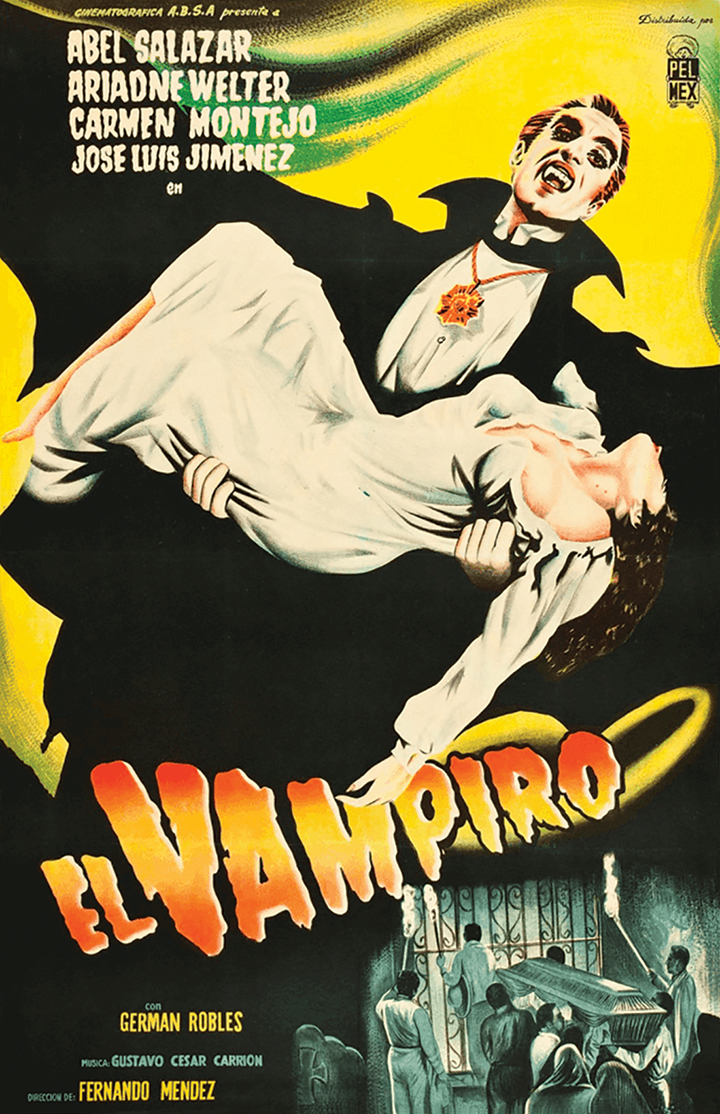
Mexico’s horror noir
By Mark Voger, author
‘Britmania: The British Invasion of the Sixties in Pop Culture’
It’s a fateful day at the Sierra Negra train station. Three things have converged upon this usually sleepy depot. There’s a crate from Hungary addressed to “Sr. M. Duval, Sierra Negra, Mexico.” There’s a man in a fedora and overcoat who looks like a misplaced Mike Hammer. And there’s a beautiful young woman who appears a bit anxious.

Marta (Ariadna Welter) is the niece of a wealthy local, Don Emilio (Jose Luis Jimenez), and she has returned to Sierra Negra to visit him and two aunts at the rambling, ornate hacienda of her childhood: the Sicomorros. The gentleman in the fedora, Enrique (Abel Salazar), eavesdrops as Marta pleads her case to the train master (Guillermo Alvarez Bianchi), who explains why her uncle failed to send an envoy to collect her: There was a landslide, and Don Emilio assumed there would be no train today. (Villagers, the man says, are fearful of working after dark.) It seems that Marta — and Enrique — are stuck where they are until the next morning.
Then a horse-drawn cart materializes to collect the mysterious crate, driven by a man wearing a long black cape. (This will not be the last time we are reminded of the 1931 “Dracula.”) Enrique, a persuasive fellow, arranges a ride for Marta with the driver. (Gentleman that he is, Enrique will accompany Marta on the cart.) En route, the party passes a marker with the inscription “Karol Conde de Lavud enero 19 de 1840.” There is also a somber procession, which we later learn is the funeral of Marta’s aunt, Maria Teresa (Alicia Montoya), who is interred cradling one big-ass crucifix. Another bit of foreshadowing: The party is observed by a mysterious woman in black.
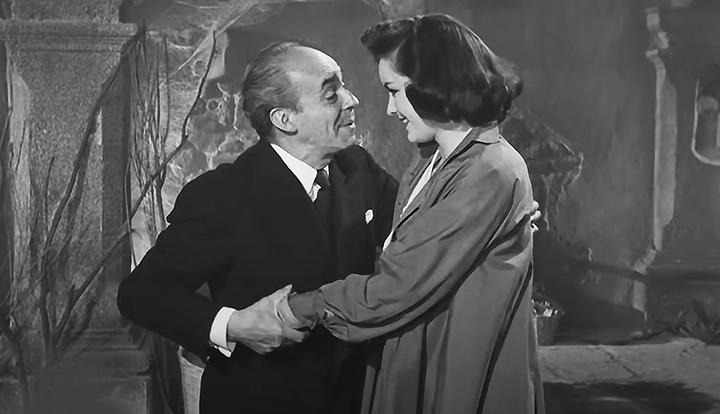
Upon arriving at the Sicomorros, the couple finds the once grand hacienda in disrepair. The cobwebs have cobwebs. (None of the superstitious villagers wish to work here.) We witness the first instance of the vampirism promised in the title: the mysterious lady transforms into a bat and flies, unseen, into the Sicomorros. She turns out to be Marta’s “old” Aunt Eloisa (Carmen Montejo), who somehow looks perfectly preserved.
At the insistence of kindly Don Emilio, Enrique agrees to stay overnight at the hacienda as well. But a hushed conversation between the two men reveals to the viewer that Enrique is a doctor who has been secretly hired by Emilio.
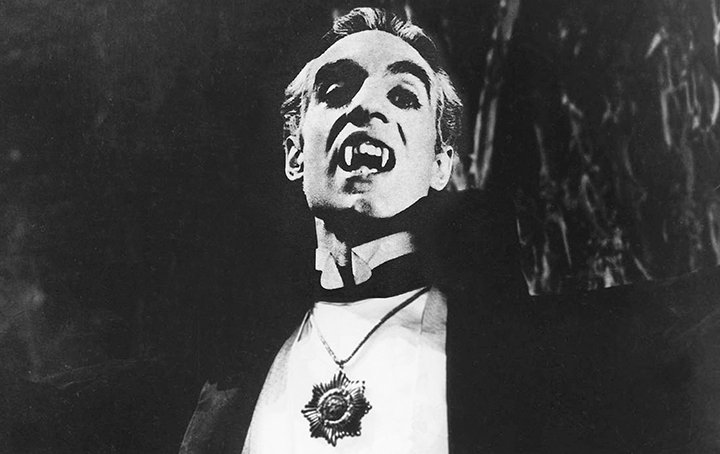
It’s time to meet El Vampiro. We first see the hand of Count Lavud (German Robles) grasping from within his coffin as the lid creaks open. Until this moment in the cinema, the camera would cut away as a vampire emerged from his coffin, almost in deference to his nobility. But when Robles rises, we see it all, and he moves with the precision of a dancer. Lavud is resplendent in a costume that conjures Bela Lugosi: a crisp tuxedo wrapped in a black cape with a high collar.
The crate, which contains soil, has been delivered. Count Lavud has three servants — ones he doesn’t mind spilling the beans in front of. In exposition, we learn that the count is bent on reviving his (likewise vampiric) brother, Karol Lavud, on the 100th anniversary of his death.
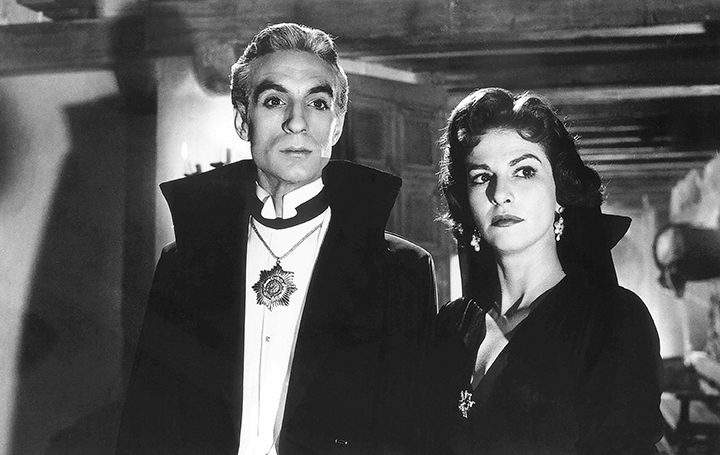
He also wants to take possession of the Sicomorros, and to this end, has cultivated an ally on the inside. Eloisa informs Marta that Maria Teresa willed her share of the Sicomorros to her niece. This puts Marta in the middle of a dispute between her uncle and surviving aunt; Emilio wants to hang onto the Sicomorros and its traditions, while Eloisa is in favor of selling to Count Lavud. (It doesn’t take a Van Helsing to figure out that Eloisa is under Lavud’s control.) Marta notices that Eloisa doesn’t cast a reflection — or are her eyes playing tricks?
Lavud, calling himself Mr. Duval, visits the hacienda, and appears to be charming in an “old world” way. But Enrique seems to know more about Duval than he lets on. Their conversation descends into a game of cat and mouse — drawing-room chatter laced with subtle threat. At one point, Lavud throws his head back and lets out a hearty laugh. But it isn’t funny.
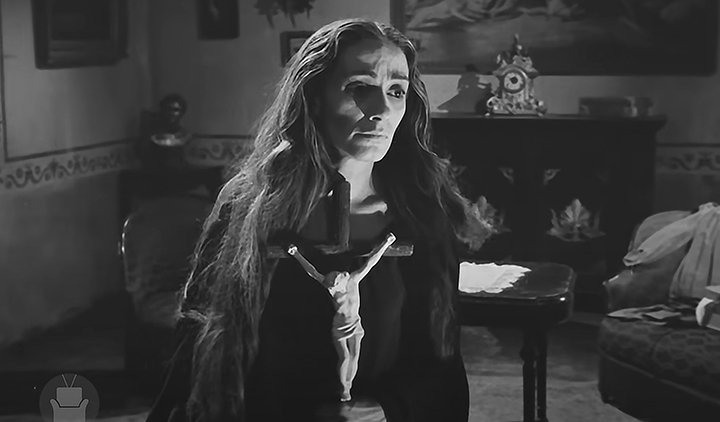
When the maid, Mrs. Santoyo (Mercedes Soler), shows Enrique to his room, she tells the visitor that her grandfather was killed by a vampire 100 years ago. Marta’s “dead” Aunt Maria Teresa doesn’t seem so dead after all, skittering into Marta’s room to lay a palm cross — ask the nearest Catholic for a definition — onto her pillow. Meanwhile, Marta’s “living” aunt snoops on Enrique.
Lavud puts the bite on Marta in a bedroom sequence that can only be called classic movie vampirism. The next morning, a dazed Marta enters a cluttered old bedroom where she finds Maria Teresa. Marta appears to die, but then Anselmo the caretaker (Jose Chavez), who is Mrs. Santoyo’s husband, sees her move. Emilio is alarmed at how Marta’s symptoms are identical to those of his dead sister. The Santoyos finally come clean: Maria Teresa is not dead. Suddenly, there she is, clutching her jumbo crucifix as usual.

Maria Teresa warns of Lavud’s plot to revive his long-dead brother. Here is where Enrique and Emilio figure it out: DUVAL is LAVUD spelled backwards! (Lon Chaney Jr. pulled the same gag as Count Alucard in “Son of Dracula.”) Enrique prevents Lavud from again biting Marta, and the two men engage in some heated swashbuckling, with Lavud brandishing a sword while Enrique waves a torch. Who will win this contest for the life of Marta?
Fernando Mendez’s dark, atmospheric “El Vampiro” was produced by Salazar and written by Ramon Obon and Ramon Rodriguez. The film is, unmistakably, a horror noir with liberal use of shadow and fog in eerie black-and-white photography courtesy of cinematographer Rosalio Solano. The foreboding, sometimes bombastic score by Gustavo Cesar wraps the movie in dread.
In his film debut, Robles is instantly recognizable as a movie star. His Count Lavud is a barrier breaker as the first screen vampire to bare his fangs, beating out the better known Christopher Lee by one year.
THE MOVIE
Above is the Spanish-language version with English subtitles — the only way to go.
